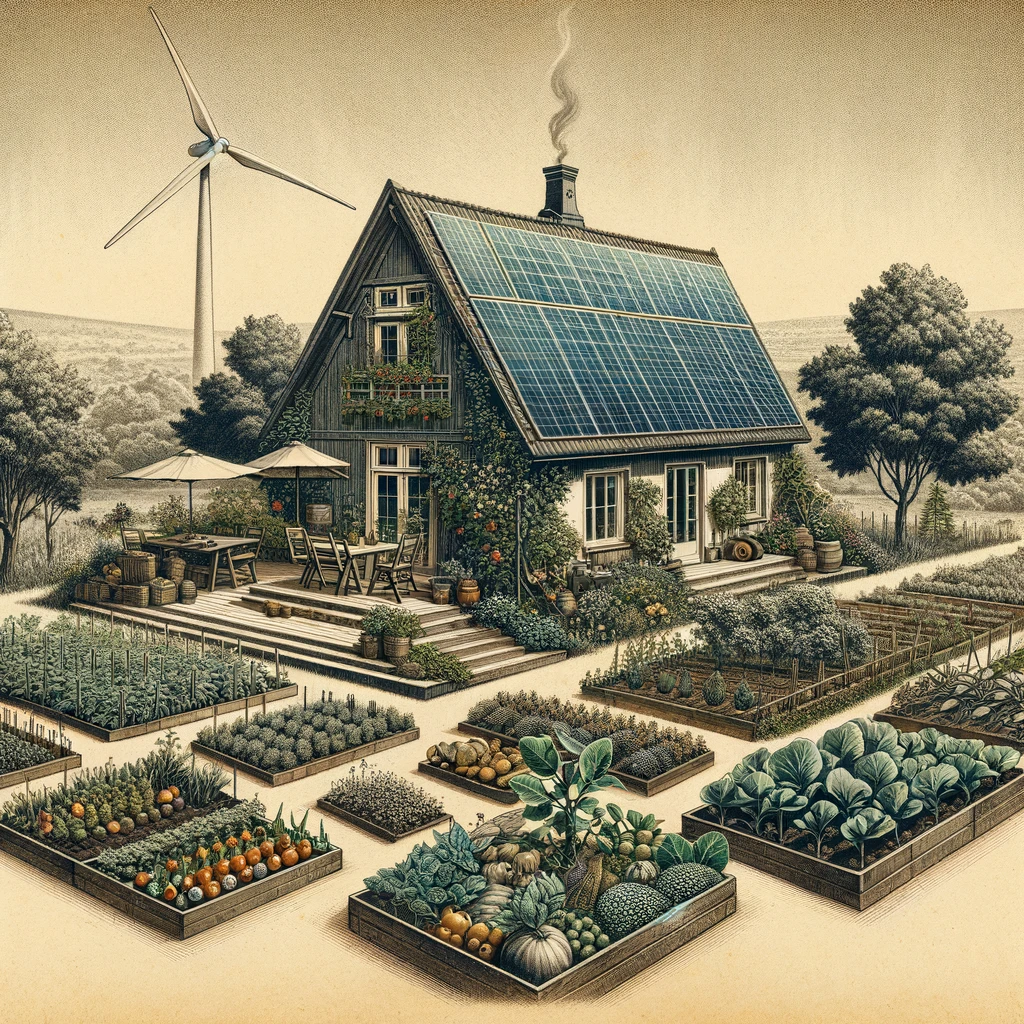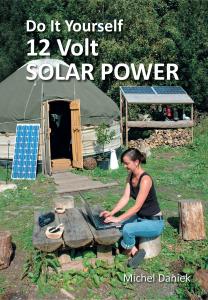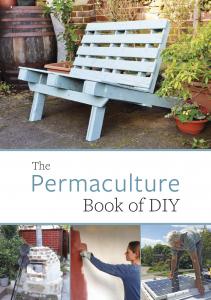
Self-sufficient homesteading is the practice of living independently and sustainably on a piece of land, producing or providing for one’s own needs, and minimizing reliance on external resources and systems. Homesteading offers a rewarding and meaningful lifestyle that promotes self-reliance, connection to nature, and a sense of community. It also has the potential to reduce one’s environmental impact and contribute to a more resilient and equitable society. However, setting up a self-sufficient homestead requires careful planning, hard work, and a willingness to learn and adapt. In this article, we will explore the steps and considerations involved in establishing a homestead and achieving greater self-sufficiency on a piece of land.
Assessing the Site
When setting up a self-sufficient homestead, it is important to start by thoroughly assessing the site to gather information about its unique characteristics and potential. This process of site assessment helps the homesteader understand the opportunities and challenges of the land, and to make informed decisions about how to use and manage it.
Some key considerations when assessing the site include:
- Climate: The climate of the site will affect the types of plants and animals that can be raised and the types of infrastructure and systems that can be implemented. It is important to understand the local weather patterns, including temperature ranges, precipitation levels, and prevailing winds, and to consider how these will impact the homestead.
- Topography: The topography of the site, including its slope, aspect, and elevation, will affect the movement of water, the suitability of different areas for different purposes, and the overall microclimate of the site.
- Soil type and quality: The quality and type of soil on the site will determine its potential for growing different types of plants, as well as its ability to retain water and nutrients. It is important to test the soil to understand its composition and pH, and to consider how it can be improved or managed to support the desired plants and animals.
- Water sources: The availability and quality of water on the site will be a key factor in the homestead’s viability. It is important to identify sources of water, such as streams, springs, or wells, and to assess their reliability, quantity, and quality. It may also be necessary to plan for water catchment and storage systems.
- Existing vegetation and wildlife: The existing vegetation and wildlife on the site can provide valuable resources and ecosystem services, as well as indicate the overall health and fertility of the land. It is important to inventory and understand the plant and animal species present on the site, and to consider how they can be incorporated into the homestead design.
By gathering this information and understanding the unique characteristics of the site, the homesteader can begin to develop a plan for how to use and manage the land to meet their needs and goals.
Designing the Homestead
Once the site has been assessed and the homesteader has a clear understanding of its characteristics and potential, the next step is to begin designing the homestead. This process involves applying permaculture principles and strategies to create a holistic and mutually beneficial design that integrates plants, animals, water systems, and structures in a way that maximizes efficiency and resource cycling.
Some key considerations when designing the homestead include:
- Zoning the property: One of the key principles of permaculture is to divide the land into different zones of use based on the frequency of human use and the intensity of resource inputs and outputs. For example, areas of the property that are used daily or require high levels of care, such as a kitchen garden or a chicken coop, might be located in Zone 1, while areas that are used less frequently or require fewer inputs, such as a woodlot or a wildflower meadow, might be located in Zone 3 or 4. Zoning the property helps to optimize the placement and management of different elements of the homestead, and to minimize unnecessary work and resources.
- Planning for food production: A key goal of many homesteaders is to produce a significant portion of their own food. When designing the homestead, it is important to consider the types of food that can be grown based on the site’s climate, soil, and water conditions, as well as the homesteader’s preferences and needs. This might include planning for annual and perennial crops, fruit and nut trees, and livestock, and incorporating strategies such as polycultures, guilds, and food forests to increase productivity and diversity.
- Water catchment and storage: Water is a vital resource for any homestead, and it is important to have a plan in place for capturing, storing, and using it efficiently. This might involve installing cisterns or other water storage systems, building swales or other water catchment features, and using greywater systems to reuse household water.
- Energy generation: Depending on the homesteader’s goals and resources, it may be desirable to incorporate systems for generating energy on the property. This might include solar panels, wind turbines, or microhydro systems, as well as more low-tech options such as wood stoves or rocket mass heaters.
- Waste management: A key aspect of permaculture is the principle of “closing the loop” and minimizing waste by using resources efficiently and finding multiple functions for elements of the design. When designing the homestead, it is important to consider how to manage and recycle waste streams, such as through composting toilets, composting systems, or animal manure management.
By considering these and other factors, the homesteader can develop a comprehensive and holistic design that meets their needs and goals, while also working with rather than against nature.
Implementing the Design
Once the homestead design has been developed, the next step is to begin implementing it by acquiring the necessary resources and materials, setting up the infrastructure and systems, and establishing a healthy and diverse ecosystem. This process will likely involve a combination of purchasing or acquiring materials, building or constructing elements of the homestead, and planting and establishing the desired plants and animals.
Some tips for implementing the homestead design include:
- Start small and scale up: It is often easier and more manageable to implement the design in stages, starting with the most essential elements and then adding more complex or ambitious elements as the homesteader becomes more comfortable and confident.
- Get hands-on experience and learn from others: Homesteading requires a wide range of skills and knowledge, and it can be helpful to gain hands-on experience and learn from others who have successfully set up a homestead. This might involve volunteering or working on other homesteads, taking classes or workshops, or joining a community of homesteaders for support and guidance.
- Consider the long-term sustainability and resiliency of the homestead: As the homestead is being set up, it is important to consider the long-term sustainability and resiliency of the design. This might involve choosing durable and low-maintenance materials, designing systems that are adaptable and resilient to changing conditions, and establishing a diverse and healthy ecosystem that can support the homestead over time.
By taking a phased and mindful approach to implementing the homestead design, the homesteader can set the foundation for a self-sufficient and sustainable lifestyle on their land.
Maintaining and Evolving the Homestead
Once the homestead is up and running, it is important to continually maintain and evolve it to ensure its long-term sustainability and resiliency. This might involve ongoing tasks such as tending to the plants and animals, repairing or replacing infrastructure and equipment, and monitoring and managing natural systems. It might also involve adapting the homestead to changing conditions or needs, such as by introducing new crops or animals, modifying systems, or adding or removing elements of the design.
Some tips for maintaining and evolving the homestead include:
- Assess and adapt: It is important to continually assess the performance and effectiveness of the homestead and to make adjustments as needed. This might involve monitoring key indicators such as water usage, food production, and energy generation, and making changes to improve efficiency or address problems.
- Develop skills and knowledge: To increase self-sufficiency and effectiveness on the homestead, it is helpful to continually develop new skills and knowledge. This might involve learning about new techniques or technologies, studying the principles of permaculture or other sustainable practices, or taking classes or workshops.
- Build a supportive community: Homesteading can be a solitary and challenging pursuit, and it can be helpful to have a supportive community of like-minded individuals to share experiences and knowledge with. This might involve joining a local homesteading group or organization, connecting with other homesteaders online, or participating in local events or activities.
By staying attuned to the needs and performance of the homestead, and by actively seeking out new learning and support, the homesteader can ensure the long-term success and resilience of their self-sufficient lifestyle.
The Homesteading Journey Continues
Self-sufficient homesteading offers a rewarding and meaningful lifestyle that promotes self-reliance, connection to nature, and a sense of community. It also has the potential to reduce one’s environmental impact and contribute to a more resilient and equitable society. However, setting up a self-sufficient homestead requires careful planning, hard work, and a willingness to learn and adapt. By following the steps outlined in this article, including assessing the site, designing the homestead, implementing the design, and maintaining and evolving the homestead, the homesteader can create a sustainable and fulfilling lifestyle on their land.
To support those interested in pursuing self-sufficient homesteading, there are a number of resources available, including books, online courses, workshops, and communities of homesteaders. Some popular resources for learning about homesteading and permaculture include:
- The Permaculture Handbook: Garden Farming for Town and Country by Peter Bane
- The Permaculture Way: Practical Steps to Create a Self-Sustaining World by Graham Bell
- The Art of Frugal Hedonism by Anna Hackett and Stephen Sparrow
- The Homesteading Handbook: A Back to Basics Guide to Growing Your Own Food, Canning, Keeping Chickens, Generating Your Own Energy, Crafting, Herbal Medicine, and More by Abigail Gehring
- The Resilient Farm and Homestead: An Innovative Permaculture and Whole Systems Design Approach by Ben Falk
By accessing these and other resources, homesteaders can gain the knowledge and skills needed to establish and maintain a self-sufficient homestead, and to contribute to a more sustainable and resilient world.
Interested in living a self-sufficient lifestyle? Living Landscapes offers permaculture design services to help you understand your land’s potential and create a resilient, productive homestead. Their expertise and resources could empower you to navigate the unique challenges and opportunities of your property.
Learn How Living Landscapes Can Support Your Homesteading Journey



